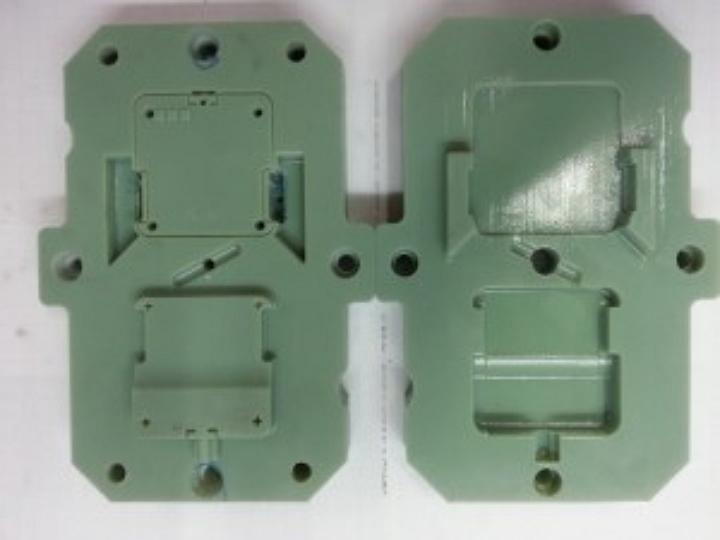 Arad Group designs, develops, manufactures, sells, and supports their highly sophisticated water metering systems for companies and clients entirely in-house. Their devices are used by residential, irrigation, and water management companies, and millions of the company’s water meters are installed worldwide. They manufacture more than 500,000 of their units per year.
Arad Group designs, develops, manufactures, sells, and supports their highly sophisticated water metering systems for companies and clients entirely in-house. Their devices are used by residential, irrigation, and water management companies, and millions of the company’s water meters are installed worldwide. They manufacture more than 500,000 of their units per year.
The company does their manufacturing via an in-house molding and injection manufacturing plant, and that plant relies on sophisticated testing and quality controls which are used to rigorously examine each water meter separately.
Established in 1941, Arad uses recyclable, polymeric ingredients and carefully considers their carbon footprint while meeting quality and performance standards from ISO and AWWA.
 As a result, Arad is constantly looking to innovative solutions, build new prototypes for smart water meters, and maintain their competitive edge in the market.
As a result, Arad is constantly looking to innovative solutions, build new prototypes for smart water meters, and maintain their competitive edge in the market.
One of the tools the company uses, Stratasys PolyJet 3D printing technology, has allowed Arad to produce prototype versions of their meters and parts in just hours, and they use the technology to build sophisticated injections molds for testing those prototypes from the end-use materials they’ve selected.
In one application of their technology, Arad has designed, produced, and tested water-tight parts which must be capable of protecting electronic components. Those plastic parts must be sealed via a process called ultrasonic welding. Were they to use conventional manufacturing methods to build the cases, Arad says, the process might require two to three months and result in production bottlenecks. Those bottlenecks often occur when metallic molds used for standard injection molding are required, but now Arad has cut to the cycle to less than one week using Stratasys 3D printing and materials.
The practical applications of ultrasonic welding for rigid plastics were first applied in the 1960s, and the ultrasonic method for welding rigid thermoplastic parts was patented by Robert Soloff and Seymour Linsley in 1965. The process of joining complex, injection molded thermoplastic parts is an ideal application of ultrasonic welding. The necessary parts are sandwiched between what’s known as a fixed shaped nest – or anvil – and a sonotrode – or horn – and then connected to a transducer.
 Ultrasonic welding of thermoplastics is essentially local melting of the plastic through the absorption of vibration energy.
Ultrasonic welding of thermoplastics is essentially local melting of the plastic through the absorption of vibration energy.
For applications such as those needed by Arad, welding trials and testing need near end-use quality parts made from the final material. In the past, those molds may have been produced using aluminum or steel molds, and building them is a costly – and time-consuming – process.
To cut down on the time to market cycle, Arad now creates their injection molds using an Objet260 Connex 2 3D printer from Stratasys. The molds are printed of Digital ABS material in just four parts: a core, a cavity, and a pair of inserts which result in the the negative draft. The entire process took just 10 hours of printing time.
Once the test parts were injected, the various elements were fused tightly together, with the electronic components already inside, by using ultrasonic welding to create the water-tight end result.
In their efforts to innovate new prototypes of smart water meters, the company’s advanced plastic mold department at their main production plant at Kibbutz Dalia in Israel has deployed advanced 3D printing technology.
“We have been using 3D printing for a while to optimize our designs,” says Nick White, the head of Arad’s Mold Department. “As a market leader in the field of water measurement solutions, Arad is also at the forefront of adopting new technologies for the benefit of our customers.”
The company’s in-house molding and injection manufacturing plant makes use of more than 700 active molds, and every year, White says the company manufactures some 70–100 new molds through the efforts of 25 skilled mold makers.
Subscribe to Our Email Newsletter
Stay up-to-date on all the latest news from the 3D printing industry and receive information and offers from third party vendors.
You May Also Like
3D Printing Unpeeled: New Arkema Material for HP, Saddle and Macro MEMS
A new Arkema material for MJF is said to reduce costs per part by up to 25% and have an 85% reusability ratio. HP 3D HR PA 12 S has been...
3D Printing News Briefs, January 20, 2024: FDM, LPBF, Underwater 3D Printer, Racing, & More
We’re starting off with a process certification in today’s 3D Printing News Briefs, and then moving on to research about solute trapping, laser powder bed fusion, and then moving on...
3D Printing Webinar and Event Roundup: December 3, 2023
We’ve got plenty of events and webinars coming up for you this week! Quickparts is having a Manufacturing Roadshow, America Makes is holding a Member Town Hall, Stratafest makes two...
Formnext 2023 Day Three: Slam Dunk
I’m high—high on trade show. I’ve met numerous new faces and reconnected with old friends, creating an absolutely wonderful atmosphere. The excitement is palpable over several emerging developments. The high...































